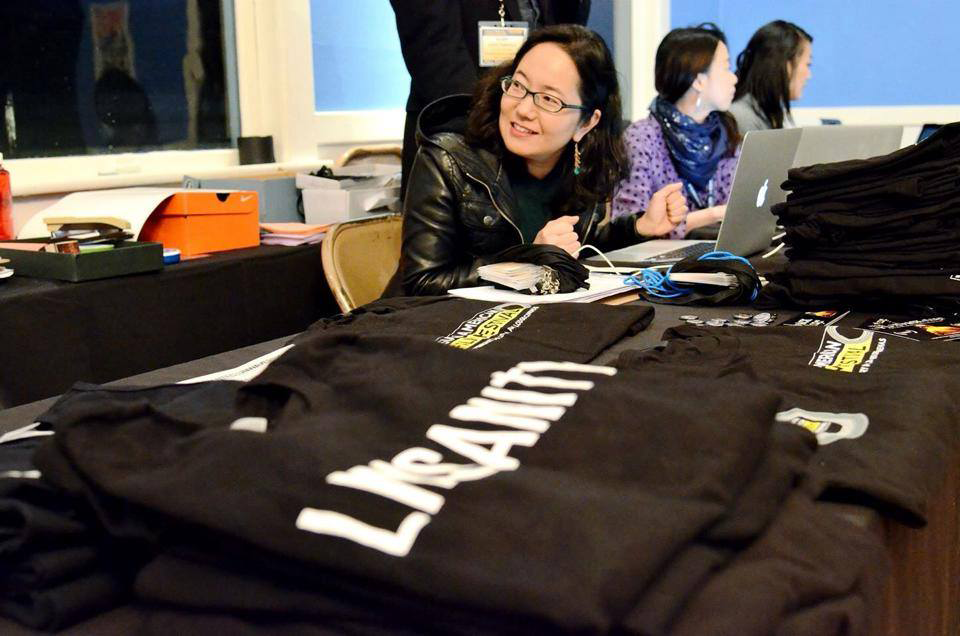
Desiree Holman, Sophont, 2015 (still); three-channel video, 12 min.; music by Angel Deradoorian
We usually imagine the future as a jumble of robots, spaceships, and shiny new technologies, but we often lose sight of how fictional futures permeate all aspects of our everyday lives.
We make decisions large and small as we try to control an imaginary future. What is the stock market if not a gamble that we can predict future investments and profits? High schoolers take SAT exams so colleges can predict their future academic success or failure. We spend billions building weapons and thousands installing alarm systems to protect us against attacks that haven’t yet happened and hopefully never will.
Even though we rarely see people of color in science fiction representations, the ways we imagine racial futures play a powerful role in our current perceptions of race. Throughout the twentieth century, science fiction remained resolutely white, with people of color appearing only occasionally as supporting players, if at all.
Even contemporary science fiction films like Interstellar (2014) and Ex Machina (2015) focus on white protagonists with little thought to the future shape of racial differences. Exceptions like the Star Trek series and the newest Star Wars films are notable because they diverge from generic conventions and disrupt the ways we tend to think about—or, more accurately, fail to critically think about—race in the future.
While these representations are important cultural touchstones, we also have a competing vision of racialized futures playing out in our everyday lives. Comedian Hari Kondabolu titled his recent stand-up recording Waiting for 2042, the year demographers predict white people will no longer be the majority race in the United States. For some this conjures up visions of an egalitarian, post-racial future. For others, 2042 promises a divisive dystopia and a white nationalist nightmare of civil rights run amok. We might interpret the call to “Make America Great Again” as a move backward into the past, away from this racially diverse future.
Desirée Holman’s Sophont in Action offers an alternative space in which to imagine the future. Gone is the more familiar whitewashed future, replaced with one that includes multiple races reconfigured in ways we cannot predict. Rather than plotting out a single future that necessarily eliminates other possibilities, Holman’s work relies on improvisation, chance, even accidents. It embraces the future as possibility, as unpredictable, as uncontrollable.
Holman deliberately populates the imagined future with a diversity of racial groups, and then asks participants to work together with artists to create something new. In this future race matters, but how it matters has not yet been decided. It is in this radical openness—governed by possibility rather than fear—that we might find ways to imagine a future that we would want to live in today.
